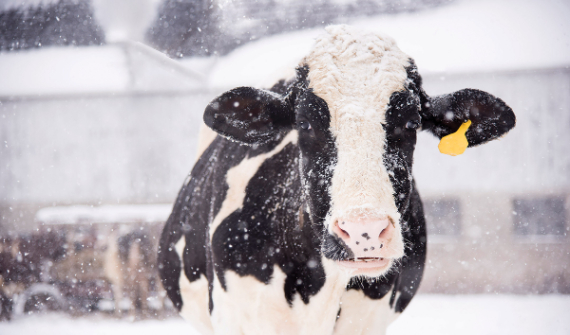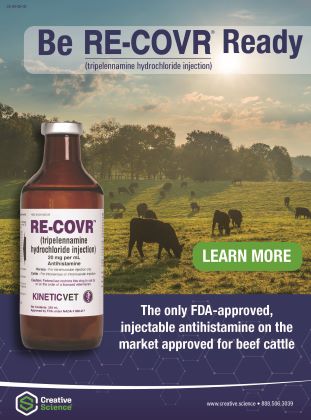Planning and Caring for Dairy Udder Health in the Winter

You can’t control the weather, but there are some practices you can control to ensure cow comfort and udder health are optimal through extreme winter conditions.
Article and photos provided by BouMatic.
Winter is a challenging time on a dairy farm. The negative temps and extreme windchills require more preparation and management. One area of concern is udder health and frostbite.
“Frostbite is a concern on dairy farms depending, geographically, where you live in the United States and Canada,” said Tony Spaeth, Director of Sales at BouMatic. “It can lead to major teat issues. When cows have frostbite, you must take extra care to get them back into the milking process. It is a real issue for management as you’ve only got so much time in a day.”
One of the products produced by BouMatic is a seasonal teat dip–Arctic Shield Plus–designed to prevent frostbite.
How Frostbite Happens and The Signs to Watch For
“Frostbite tends to happen by a lack of blood circulation,” Spaeth explained. “You often see this in post-fresh cows and heifers. They tend to have low blood circulation or edema issues.” That is why he advises keeping a close eye on your post-fresh pen regarding frostbite.
He also advises to: “Watch the flow reports on your milk metering system. Or if you have hired help, tell them to keep a close eye on it. If you see a decrease in milk for any reason it may be a sign of frostbite.”
Physical signs to watch for include cows dancing during the milking process, irritable cows, milkings taking longer, brown skin that is flaking, red teats, chapping and vertical lesions.
Why a Seasonal Teat Dip Makes All The Difference
Another frostbite factor is damp bedding and the milking process. Cows are often returning to the freestalls still wet from being milked. That is where a teat dip like Arctic Shield Plus comes in. It’s applied post-milking and is formulated to provide warmth.
A winter-specific teat dip protects against the harsh conditions while still performing the job of a regular dip – killing germs that lead to mastitis and applying skin conditioners for healthy teat skin.
Arctic Shield Plus has a high amount of lanolin and glycerin to provide great skin conditioning. It also has propylene glycol to add heat and help with blood flow. This product is a great option for the post-fresh pen where you know blood circulation isn’t optimum.
For some, a concern with using a seasonal teat dip is that it will not effectively kill the germs like a regular dip. “You’re not compromising your kill rates with Arctic Shield Plus,” Spaeth stated. “We use a third-party, independent laboratory for all of our efficacy testing, and >99.9999% kill rate on staph, strep and E coli.”
Other Management Strategies for Winter
Along with adding a winter-specific teat dip to your winter management strategy, preventative maintenance is key when it comes to frostbite and udder health. Watch the weather forecast. Know what is going on. Be proactive. Try to stay ahead of it.
Other care strategies include trying to keep bedding dry, discussing with your nutritionists the appropriate rations to feed, regularly checking your waterer or water tanks for frozen water, and preventing the accumulation of ice as much as possible.
Back to winter-specific teat dip. “If you live in harsh winter environmental conditions, you want protection for your cows,” Spaeth advised. “When you use seasonal teat dips, you’re providing an insurance policy on your cows to make certain they don’t get frostbite, which can lead to mastitis and not milking out. You have to protect those cows and be able to protect that milk quality standard on your farm.”




